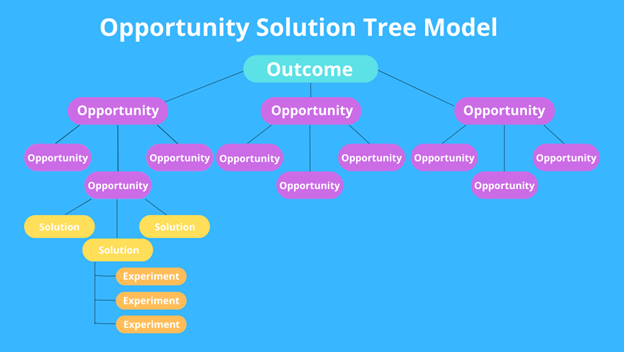Generations are characterized by a unique convergence of the history, culture, and economics of a time period. The advancement of the internet and web applications through the years has largely shaped the characteristics of recent generations. This has given each generation — from Baby Boomers to Gen Zers — its own notable values and preferences when it comes to defining the optimal User Experience (UX).
These different generational characteristics and expectations impact UX testing and its results. Since UX testing, or usability testing, seeks to distill first-hand accounts about experiences from actual users, it is subject to the individual preferences and demographic characteristics of these users. This means testing results and conclusions can be skewed if generational differences are not accounted for.
In this way, understanding how generational differences impact usability testing is key to building user-centered web interfaces that successfully cater to multi-generational preferences.
What is Usability Testing
Usability testing collects live observational data about how users interface with a product or UX feature. It’s not enough to have accurate consumer personas and detailed target markets; designers and developers need to test their products with real end users if they want to meet their needs. For this reason, usability testing is often utilized in the designing phase of a new product and can be employed to collect both quantitative and qualitative UX data.
Usability testing commonly utilizes a facilitator or moderator who asks participants to perform certain tasks on a website or digital application and then records experiential data points during this process. Moderated data collection can be done in person or remotely through surveys or screen-sharing options.
Some methods of user-based testing include contextual inquiry where a moderator asks participants questions while observing them and lab testing where a trained facilitator guides participants through a formal experiment. Usability testing can also be executed without the use of a moderator through tests like session recording where participant actions are observed and digitally recorded or through unmoderated remote testing where participants are told to perform tasks without any outside direction. Whether moderated or unmoderated, these tests provide unique insights that allow designers to create more intuitive applications.
How Participants Shape Usability Testing
Since usability testing is about distilling actionable data from observing real end-users, the participants for these tests are king. They drive the data and its relative conclusions, whether or not these conclusions are true for larger user bases. In this way, selecting realistic user participants for UX testing is vital to accurately shaping greater UX decisions.
Participants can come from many different sources, but they must be representative of end users. Colleagues and internal participants generally provide the most skewed results since they likely won’t represent a layman user and may struggle to provide criticism. Customers are more realistic participants, but sometimes there are organizational barriers to using actual customers for research purposes. Research and recruiting agencies are also utilized to find participants and provide the service of vetting recruits and coordinating their testing.
Regardless of where participants come from, the greater challenge is usually assembling a large enough group of willing recruits. Depending on the UX test, as few as 5 participants can be enough to gain insights on most usability issues but upwards of 40 participants is better for statistical analysis. Generally, participants are compensated in some way for their time which can make finding participants easier.
Ways Generational Diversity Influences Testing
Usability test participants, regardless of where they are sourced, will be influenced by their generational demographics which shape their UX preferences and, in turn, test results. Generational marketing shows generational ties not only influence a consumers’ current core values and experiences but also their evolving product needs and financial capacities. In this way, usability test results will be influenced by each generation’s current UX preferences as well as their ongoing life development. Here are a few examples of distinctive generational characteristics and UX preferences:
Baby Boomers – Born 1946 to 1964
The baby boom generation is sometimes known as digital immigrants since they did not grow up with the internet and online pervasion. However, they are not technologically averse. Most own a computer and smartphone, and according to Forbes, 92% prefer shopping online to shopping in stores or malls. They tend to be slow to adopt new products and technologies but they have significant buying power.
Baby Boomers expect digital platforms to be simple and straightforward. A study by Visual Objects found unreliability is the most influential factor in their user experience, so they value consistent quality. And as a UX reference point, most rank Amazon as their preferred online shopping platform.
Generation X – Born 1965 to 1980
Generation X has the most diverse technology habits of recent generations. Sometimes an overlooked generation, this group has lived a portion of their life both with and without the internet. They spend a significant amount of time on Facebook and generally prefer authentic and educational content to viral trends.
Gen Xers want digital platforms to be useful and easy to navigate. They commonly conduct research online and Google reports that 55% of their product research is conducted through search engines. They prefer simple web designs with easy-to-identify icons and navigation patterns.
Millennials – Born 1981 to 1996
Millennials, also known as Generation Y, are the start of the digital native generations since they have spent nearly their whole lives surrounded by technology and the internet. Pew Research shows that 90% of this generation is active online. However, they have significantly less buying power than previous generations and tend to rely heavily on reviews and product value.
Millennials prefer digital platforms that are convenient and modern. They tend to be critical of outdated designs and interfaces. According to Statista, 54% of millennials will use shopping apps over websites because they perceive them to be easier to use.
Generation Z – Born 1997 to 2012
Generation Z is made up of true digital natives. Their entire lives have been surrounded by online applications for work, school, and recreation. As of 2021, 48% of this age group in the U.S. accessed the internet nearly constantly Statista found. Gen Zers are also known for valuing inclusivity, social justice, and environmentalism.
Gen Zers expect digital platforms to be new, exciting, and engaging. They like interactive experiences and also expect inclusive designs with accessible features. Gen Zers readily adopt mobile applications and in a recent IBM study 75% of them selected their smartphone as their favored device.
These generational characteristics and more highlight the uniqueness of each demographic and demonstrate differing UX priorities.
Catering to Multi-Generational Preferences
When it comes to developing a multi-generational UX interface, start by understanding different generational characteristics and values. This serves as a reference point for developing an accurate, testable hypothesis for your web design or digital product. It also doubles as more market research to better understand your site’s primary target user or audience.
Next, isolate generational data by segmenting participants in your usability testing. No amount of demographic research can substitute actually testing different generations on your website or product. This will compile real UX insights and data that can be compared across your generational segments to distill tangible user preferences from each generation that pertain to your site’s usability. These preferences can then be compiled to develop a web platform that caters to a multi-generational audience.
Since assembling usability test participants can be challenging, it is important to note that finding participants to fill each generational segment may not be straightforward. If you’ve never utilized generational segmentation in your usability testing, consider writing a project proposal first to outline your research goals and propose a solution for gathering multi-generational participants. One idea is to try combining different participant-recruitment strategies, such as utilizing a recruiting research agency and reaching out directly to your customers to gather testing groups representative of different demographics.
Conclusion
From Baby Boomers to Gen Zers, each generation’s unique expectations and values lend to creating differing optimum user experiences. Some users want straightforward simple designs while others are looking for convenient mobile solutions, and still others prefer modern interactive interfaces. However, these differing ideal UX standards make it hard for web developers and designers to accurately distill usability insights when testing.
For these reasons, understanding how generational differences impact usability testing is key to proper testing and results that can help you build user-focused web platforms that effectively cater to multi-generational users.
- User Experience in Rural Agriculture: Balancing Tradition and Innovation - June 4, 2024
- Nurturing UX-Centric Culture in Your Tech Startup - May 7, 2024
- Exploring the Connections Between Sustainability and UX Design - March 19, 2024
![]() Give feedback about this article
Give feedback about this article
Were sorry to hear about that, give us a chance to improve.








